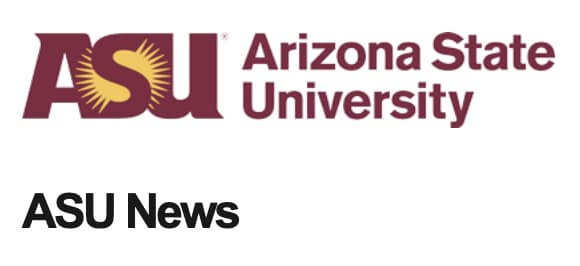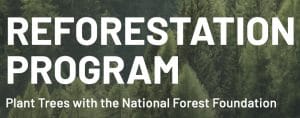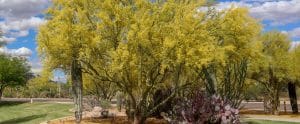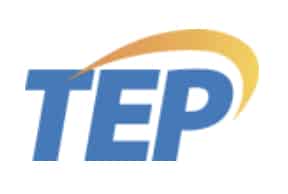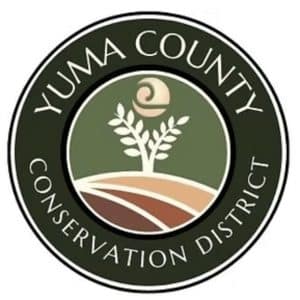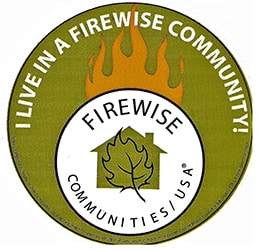Go Wild, Go Green, Go Garden!
Conservation of natural resources is one of the major tenets of garden club. Since 1929, National Garden Club has promoted membership, gardening and environment concerns. AFGC is promoting these ideals through self-education and networking among like-minded members and affiliates.
Conservation of water, soil and land! It’s about making smarter choices in our daily habits and understanding how what we do impacts our environment and the diversity of life. Below are thoughtfully selected collections of quick definitions, quick links and featured articles to inspire us. Called a Challenge Wall – all clubs are challenged to participate by encouraging members towards self enrichment. Clubs showing participation will be honored at AFGC Annual Meetings.
Bookmark this page in your browser so that you can keep coming back.
Questions? email azgardenpresident@gmail.com

Challenge Wall Focus Areas:
President’s Challenge 2025-2027
The Challenge Wall
In pursuit of self-enrichment and awareness, I challenge every member to read up on relevant issues that affect our lives, our gardens and the future of the environment.
The Challenge Wall is meant to inspire discussions and further interest in what is going on and who is doing what. You may earn tokens for correct responses towards a Club Badge …and cash prizes for AFGC clubs in good standing. This is completely “open book” and I encourage you to work with others to answer these questions. Each focus area is associated with a 3 question survey. Answer the survey questions correctly to earn tokens towards your club’s prize.
There will be 2 Challenge Sets and each set will include 4 surveys, one for each Focus Area :
- Challenge Set #1 will open from October 1st, 2025, through April 1st, 2026, with Club Awards presented at 92nd Annual Meeting on April 23rd, 2026.
- Challenge Set #2 will open from October 1st, 2026 through April 1st, 2027, with Club Awards and Club Badges presented at the AFGC Biennial State Convention 2027.
Refer to the rules and criteria below for more information.
May your garden always be in bloom!
Jenn Moreland
AFGC President 2025-2027
/
Sustainable Gardening
Quick Definitions:
Key Practices for Sustainable Gardening in Arizona
*HINT: Click on each title to read a selected article about the topic.
Xeriscaping: This water-conserving landscape approach focuses on designing with drought-tolerant plants, particularly native species, to reduce water consumption and maintenance.
Water-Wise Irrigation: Employ efficient irrigation systems like drip irrigation and olla pots to deliver water directly to plant roots, minimizing waste and weed growth.
Rainwater Harvesting and Bioretention: Arizona residents are allowed to capture and use rainwater from their property for outdoor irrigation and other uses. You can implement active systems using rain barrels or tanks, or passive systems like berms and swales to direct water into the soil.
Organic Mulch: Apply organic mulches to pots, gardens and fruit trees to retain moisture, insulate plant roots from extreme temperatures, suppress weeds, and add nutrients as they decompose.
Composting: Create compost from yard and kitchen waste to enrich soil health, improve moisture retention, and reduce landfill waste. Compost methods include bins, vermicomposting, bag composting and bokashi container.
Native Plants: Choose native Arizona plants because they are adapted to the local climate, require less water and maintenance, and support local ecosystems.
Soil Health: Soil is a complex, life-sustaining medium composed of mineral particles, organic matter, water, air, and countless microorganisms. It acts as a habitat for plant roots and various organisms while playing a crucial role in the global ecosystem.
Build Wildlife Habitats: Create habitats for local wildlife by incorporating diverse native plants and avoiding chemicals that can harm beneficial insects, birds, and other animals.
Quick Links to Key Websites
UoA Master Gardeners’ Gardening
The NEW 5 C’s for Arizona
Chips, Climate, Culture, College, Construction
Quick Links to Grant Funding
Featured Articles
Angela Judd has been growing vegetables and flowers in the desert since 2015. She authors garden blogs, has a youtube channel and hosts in-person classes in Phoenix AZ. On her “Growing in the Garden”, you will find many ideas and how-to’s for designing gardens that will thrive during hot summers and mild winters. Take a look around and sign up for her newsletter to stay in the know.
In February 2025, the University of Arizona Cooperative Extension published Economic Contribution of Yuma County Agriculture which includes an analysis and statistics for crop production, economic contributions and water productivity.
-
Yuma’s agriculture and agribusiness industries generated $4.4 billion in 2022
-
Yuma’s top 3 crops are iceberg lettuce, romaine lettuce and processed lettuce
-
Yuma accounted for 18% of crop sales in the Colorado River Basin, but consumed only 8% of the irrigation water
Stay in the know… “This research matters. It clearly shows that we urgently need new policies and groundwater management strategies on a global scale,” said Famiglietti, who is also with the Julie Ann Wrigley Global Futures Laboratory and a former senior water scientist at NASA’s Jet Propulsion Laboratory. “While efforts to mitigate climate change are facing challenges, we can address continental drying by implementing new policies around regional and international groundwater sustainability. In turn, this will slow the rate of sea-level rise and help preserve water for future generations.”
/
Reforestation
Quick Definitions
Reforestation is about replanting and restoring forest cover to areas where it historically existed, but with a focus on long-term ecological balance, biodiversity and social and economic benefits for local communities. Urban forests are important because even though they are only 5% of the state’s tree canopy, urban forests support 85% of its human population.
Fun Facts about Arizona public lands!
- Arizona has 6 National Forests and 18 National Parks and 34 State Parks.
- Arizona has 12.1 Million acres of BLM public land and 17.5 Million subsurface acres of mineral estate.
- Arizona has 22 federally recognized Native American Tribes operating 20 reservations covering more than 19 Million acres of land.
Goals of Sustainable Reforestation
- Combat Climate Change: Storing carbon dioxide from the atmosphere in newly planted trees.
- Protect Biodiversity: Creating habitats for wildlife and restoring ecosystems.
- Regulate Water Cycles: Helping to maintain healthy water sources and prevent erosion.
- Provide Economic Opportunities: Creating jobs in plant nurseries and through the sustainable management of forest resources.
Quick Links to Key Websites
Western National Parks Association – Arizona
National Forest Foundation – Southwest
Quick Links to Donations
Key Principles of Sustainable Reforestation
*HINT: Click on each title to read a selected article about the topic.
Ecological Integrity: A natural ecosystem is restored to a healthy, stable and functioning state within natural fluctuations that supports local biodiversity of plant and animal species.
Community Involvement: Active participation of individuals and organizations is essential to improve urban forests and wildlands and to to drive positive change for the environment and promote informed decision-making.
Species Selection: Native tree species that are well-suited to the local climate and soil conditions are essential for resilience in the various microclimates across the state’s diverse deserts, woodlands and high-elevation forest regions.
Tree Health Monitoring: Arizona government and universities monitor tree survival rates, tree growth, and overall ecosystem health using satellite systems, regular forest visitations and university-based research.
Sustainable Resource Management: Arizona prioritizes wildfire risk reduction and watershed health (rather than widespread tree canopy) through forest thinning, sediment management and regenerative agriculture.
Featured Articles
National Forest Foundation (NFF) is a non-profit key partner to the National Forest Service. NFF funds and organizes the teams of professionals who evaluate, design and replant forest areas. NFF Southwest Region has people on the ground in Arizona and New Mexico working to fulfill the reforestation capacity called for in the 2021 REPLANT Act. These teams approach their tasks through Holistic Reforestation which increases the capacity of seed supply and creates a more stable ecosystem to improve biodiversity of tree species and the wildlife that is dependent on the health of the land.
Garden Club members may find opportunities to restore a natural habitat area. We can volunteer to help create a plan and offer a native plants list that is suitable to the site. University of Arizona offers online tools to help with this endeavor such as the EcoRestore Portal. In this easy-to-use tool, you would complete a 2-3 minute assessment to investigate site characteristics and management goals. Based on your answers, a list of candidate restoration species is developed and can be further refined based on availability and funding.
Check out UoA EcoRestore Portal here.
“Arizona has a lot to brag about! Have you seen the size of some of our trees? Check out the top 25 Magnificent Trees across Arizona.” states the website for the Department of Forestry and Fire Management (DFFM) under the Magnificent Trees Program. This program encourages us to register Champion Trees, Heritage Trees and Witness Trees as a means of encouraging all of us to pay attention to critical species in all our forests.
/
Arbor Day Tree Planting
Quick Definitions
Arizona observes Arbor Day on the last Friday of April. This state tradition is initiated by the Arizona Department of Forestry and Fire Management (DFFM) through an Arbor Day Proclamation which dictates the celebration at the state capitol. The day includes an awards ceremony for communities and organizations who excel in tree care and management. The event culminates in a commemorative tree planting ceremony to promote tree growth and beautify the community.

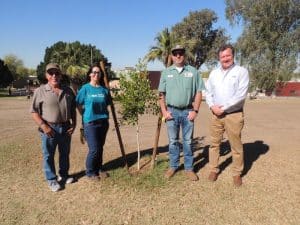
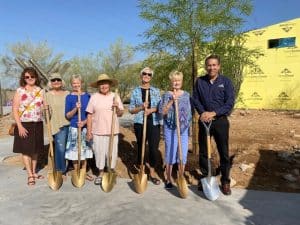
Featured Articles
Arbor Day Foundation believes planting a tree represents a belief that the tree will grow to provide us with clean air and water, cooling shade, habitat for wildlife, healthier communities and endless natural beauty. This global nonprofit organization is credited with planting more than half a billion trees.
THE 2025 CANOPY REPORT: See how Americans view trees, green spaces and the environment. For every report downloaded, Arbor Day Foundation will plant a tree.
Take a survey or donate to receive 10 free trees. Act for a better tomorrow.
The city of Mesa AZ is a Tree City USA since 2010. According to the city’s website, “Becoming a Tree City USA provides a community with a greater ability to improve community urban forests, encourage tree care and planting programs, enhance livable communities, and of course, benefit the environment. ” Mesa initiated a 1 Million tree initiative and celebrates Arbor Day on the last Friday of April.
City of Chandler AZ redefines its Arbor Day tradition by celebrating it in November. Why? Their website states “…fall is a better time to plant and prune trees in our southwest desert climate.” Chandler residents can pick up one free 5-gal native tree per household a the event on November 1st, 2025.
Find native trees to plant in Arizona communities
/
Firewise Communities and Fire Safety
Quick Definitions
Pacific Region Director’s Project
PR Director Tanja Swanson has called all clubs to action… “I want you all to become familiar with Firewise Communities. This is a national program that could be the key to protecting nearby homes and businesses from the next catastrophic fire… The program provides you with benefits such as learning how to prepare a “defensible space” around your home and driveway. In these defendable areas, firefighters can more safely and effectively protect your home and property from a wildfire. ”
Key Actions to Make a Home Safer from Embers and Radiant Heat per NFPA
- Clean roofs and gutters of debris that could catch embers.
- Replace or repair loose or missing roof shingles or tiles to prevent ember penetration.
- Reduce embers that could pass through vents/eaves by installing ⅛ inch metal mesh screening.
- Clean debris from exterior attic vents and install ⅛ inch metal mesh screening to reduce embers.
- Repair or replace damaged or loose window screens and any broken windows.
- Screen in areas below patios and decks to prevent debris and combustible materials from accumulating.
- Move flammable materials away from wall exteriors – mulch, leaves, firewood, anything that can burn.
- Remove anything stored underneath decks or porches.
Featured Articles
What is the Home Ignition Zone (HIZ)?
Credited to U.S. Forest Service researcher Dr. Jack Cohen, research shows how homes ignite from wildfires and how local conditions around the house impact ignitability from embers and small surface fires. The HIZ is important because it defines the perimeter conditions to increase the structure’s chances of survival during wildfire out to 100ft if flat ground or out to 200ft if sloped ground.
HIZ Areas include:
- Immediate Zone (0 to 5 feet)
- Intermediate Zone (5 to 30 feet)
- Extended Zone (30 to 100 feet)
Firewise USA Program originates from the National Fire Protection Association. The program teaches people how to adapt to live with wildfires. As a homeowner, there are simple things you can do to reduce risk to your property from wildfire.
Download the NFPA “Living with Wildfire” booklet here.
Arizona’s DFFM is the liaison to NFPA’s Firewise USA Program. DFFM works with homeowners associations, communities, and neighborhoods across the state to conduct Firewise USA training opportunities for residents. In turn, the residents work with DFFM to manage their sites and ensure they are meeting all Firewise USA requirements annually.
Read more about “How to Become Firewise USA Recognized” on the DFFM website.
Dragon Bravo Fire – Grand Canyon North Rim and Kaibab National Forest
This massive fire started by lightning on July 4, 2025. It is the 7th largest wildfire in Arizona history. As of September 19th, the fire had burned 145,504 acres and is 94% contained. The fire supression costs have reached $124,000.
Officials from both the Grand Canyon and the Department of the Interior’s Burned Area Emergency Response (BAER) team recently completed infrastructure assessments. Of the 229 buildings in the area, 106 were “severely damaged” or “destroyed,” which included the famed Grand Canyon Lodge and the wastewater treatment plant, according to the feds.
A survey team concluded that more than half of the burn area has soil considered to have low burn severity. That is good news, as it will be easier for that area to recover from the fire. However, that still means that there’s a large portion of forest where the burn was moderate and high, and that can cause problems. After the smoke has cleared and fire activity slows, recovery assessments are next for the Dragon Bravo Fire.
Feedback Survey




